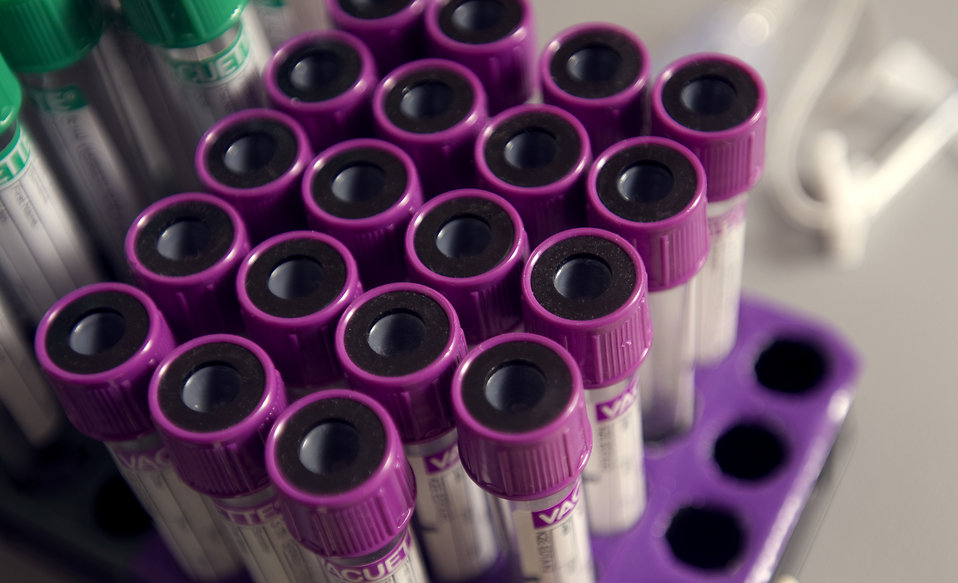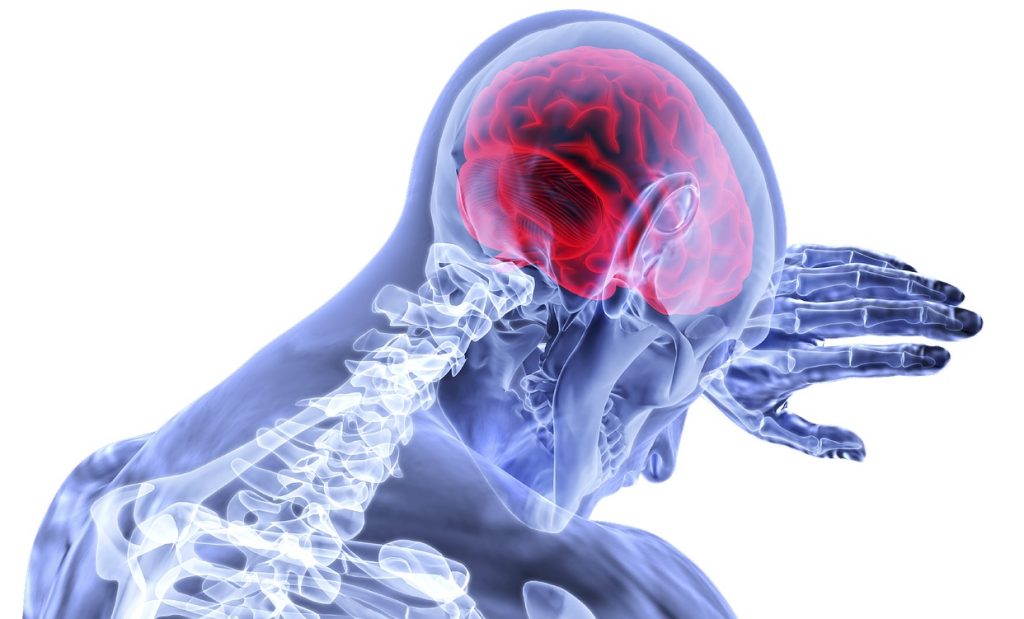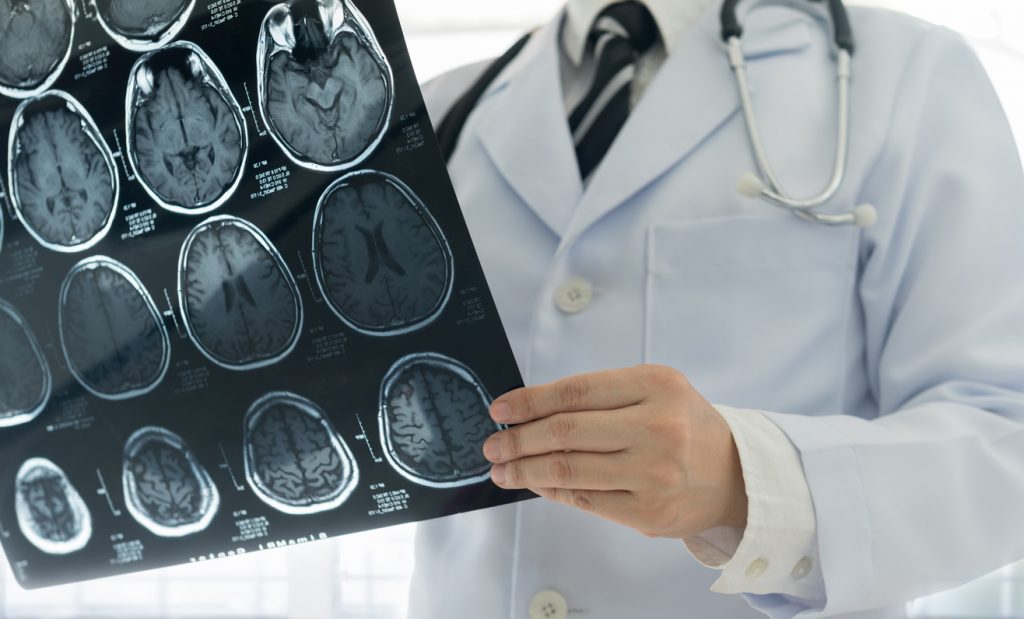This study will identify abnormalities of a protein called alpha synuclein that is found in the brain of patients with Parkinson’s disease and related disorders to see if it can serve as a disease marker. There is currently no treatment that will cure or delay progression of Parkinson’s disease. Thus, there is a need to find disease markers that can help diagnosis the disease, follow its progression, and monitor the effects of treatment. This study will examine and compare alpha synuclein from blood and cerebrospinal fluid (the fluid that bathes the brain and spinal cord) of patients with Parkinson’s disease, patients with variants of the disease, and healthy normal volunteers to determine differences in the protein that might serve as a disease marker.
Patients with neurodegenerative disorders such as Parkinson’s disease and Parkinson plus disorders (other diseases that are variants of Parkinson’s disease) and healthy volunteers between 18 and 80 years of age may be eligible for this study. Candidates are screened with a medical history, physical examination, neurological evaluation, and blood tests. A brain MRI (magnetic resonance imaging) scan is done if needed for diagnosis.
All participants have a blood sample drawn and a lumbar puncture (spinal tap). For the lumbar puncture, a local anesthetic is given and a needle is inserted in the space between the bones in the lower back where the cerebrospinal fluid circulates below the spinal cord. A small amount of fluid is collected through the needle. The fluid is analyzed for specific proteins and chemicals that are leaked from the brain in various disease states and that cannot be measured in blood.
Participation of healthy volunteers is completed after the blood draw and lumbar puncture. Patients with Parkinson’s and related diseases return to the clinic once a year for 2 years for a repeat blood draw and lumbar puncture to follow changes in the alpha synuclein protein and to monitor disease progression. Patients with specific proteins of interest may also be asked to come for a repeat lumbar puncture 6 months after the first procedure.
Official Title
Investigation of Biomarkers in Parkinson’s Disease
Conditions
Parkinson Disease
Study Type
Observational
Study Design
Natural History
Further Details
OBJECTIVE: Parkinson’s disease (PD) is a progressive neurodegenerative disorder of unknown etiology in which several underlying pathophysiological mechanisms including proteasomal degradation, mitochondrial dysfunction, inflammation, oxidative stress, and excitotoxicity may contribute to cell death. No treatment is known to cure or delay progression of PD, thus there is a need to investigate measurable biologic markers for the purpose of diagnosis, monitoring disease progression and effect of treatment. This study will focus on alpha synuclein and its metabolic pathways as a potential biomarker, to assist in evaluation of pathogenesis and future diagnostic and therapeutic options. STUDY POPULATION: In this pilot study we plan to include 30 patients with Parkinson’s disease (PD), 30 patients with Parkinson plus disorders, and 30 control patients without neurologic disease or autoimmune disorders. DESIGN: Samples of serum, plasma and cerebrospinal fluid (CSF) will be collected from all patients for analysis at the beginning of the study. The assay will be performed for various proteins including cytokines primarily related to the alpha synuclein (AS) pathway. A repeat CSF, plasma and serum analysis will be performed in patients with PD, and Parkinson plus disorders at the end of one and two years to follow changes of protein expression profiles with disease progression. ASSESSMENT OF RISKS AND BENEFITS: This study will carry the risk associated with venepuncture and lumbar puncture.OUTCOME ESTIMATE AND POTENTIAL MEANING FOR THE FIELD: The primary outcome measure is to correlate the changes of alpha synuclein phosphorylation in CSF, plasma and serum with changes in UPDRS motor score in patients with PD over the period of 2 years, compared to controls. The secondary aim of the study is to compare the protein expression profiles between different synucleinopathies including PD, Multiple System Atrophy (MSA) and Dementia with Lewy Bodies (DLB) with time. There are currently no validated surrogate disease markers in PD or other related neurodegenerative disorders. Our work would hopefully help understand pathophysiologic mechanisms in patients with PD, monitor disease progression using specific biologic markers, and in future development of targeted therapies.
Study Start
July 13, 2004
Eligibility & Criteria
INCLUSION CRITERIA- Patients between ages 18 to 80 years who are able to give informed consent.- Before any study related procedure is undertaken, the subject or his representative must sign a consent form.- In those individuals with dementia, a legal guardian will need to sign the consent form prior to any procedure.EXCLUSION CRITERIA- Medical disorders such as lupus, diabetes, serious heart and kidney disease, thyroid dysfunction and any chronic medical illness with the exception of hypertension and hypercholesterolemia.- Patients with any history of bleeding diatheses or abnormal platelets or PT/PTT.Patients using anticoagulants and other drugs which can alter PT/PTT.- Patients with evidence of elevated intracranial pressure based on the imaging studies.Pregnant women- Children
Total Enrolment
90
Contact Details
National Institute of Neurological Disorders and Stroke (NINDS)
All content and media on the HealthEngine Blog is created and published online for informational purposes only. It is not intended to be a substitute for professional medical advice and should not be relied on as health or personal advice. Always seek the guidance of your doctor or other qualified health professional with any questions you may have regarding your health or a medical condition. Never disregard the advice of a medical professional, or delay in seeking it because of something you have read on this Website. If you think you may have a medical emergency, call your doctor, go to the nearest hospital emergency department, or call the emergency services immediately.







